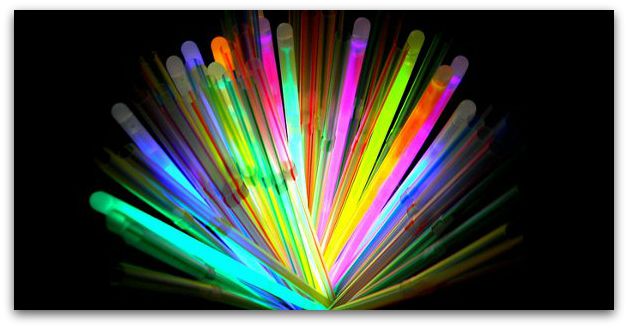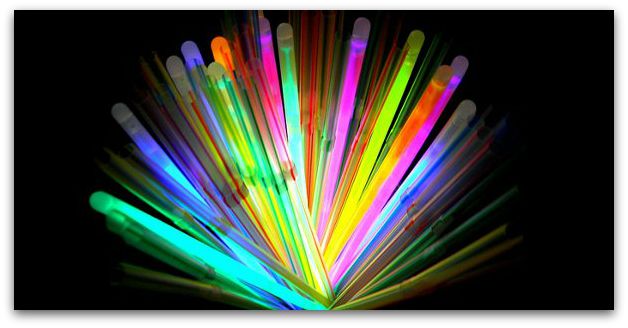Uncle John knows pretty much everything—and if he doesn’t, he heads his massive research library, or puts one of his many associates on the case. So go ahead: In the comments below, ask Uncle John anything. (And if we answer your question sometime, we’ll send you a free book!)
How do those glow-in-the-dark light sticks work?

Each thin plastic tube is filled primarily with a solution of phenyl oxalate ester and a florescent dye (different dyes allow for different colors of glow stick). Also inside are tiny, fragile glass vials filled with another chemical, a hydrogen peroxide solution. That solution is called an activator, and you activate the glow stick by “cracking” the stick, which is breaking the vials.
This instantly mixes the hydrogen peroxide with the phenyl oxalate ester and dye. Ready for some big words? A chemical reaction called chemiluminescence takes place, converting those solutions into light energy. The hydrogen peroxide oxidizes the phenyl oxalate, creating a chemical called phenol, along with a peroxyacid ester. That ester is unstable, so it rapidly decomposes, giving off a cyclic peroxy compound…which itself decomposes into carbon dioxide, releasing energy to the dye. Electrons in that dye are activated and release energy in the form of light. All of this happens in a fraction of a second.
Ever wonder why people put glow sticks in the freezer to make them last longer? Cold slow down the rate of the chemical reaction, so they burn slower. (If you were to put them in hot water, it would speed up reaction and make the glow stick burn out faster.)








